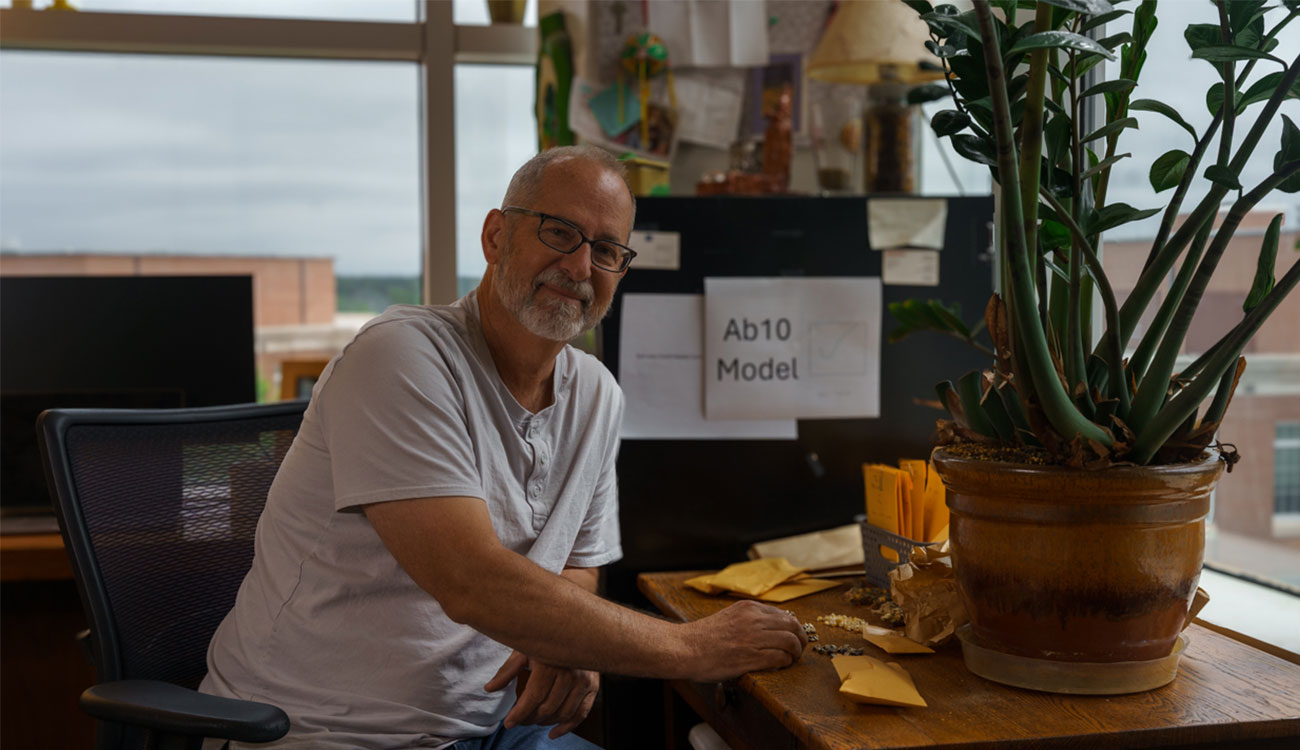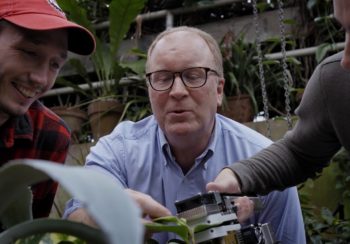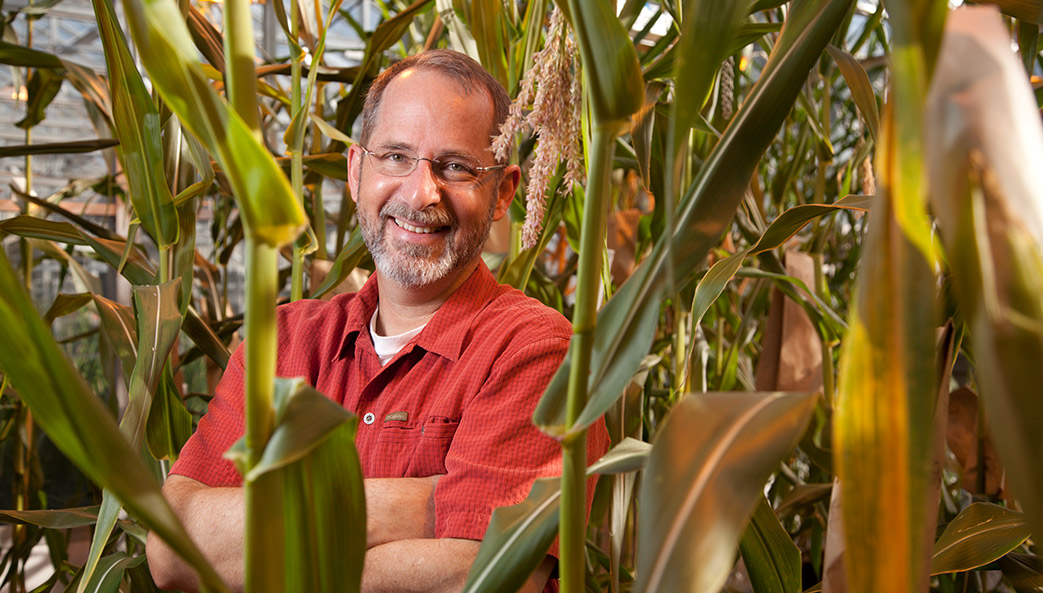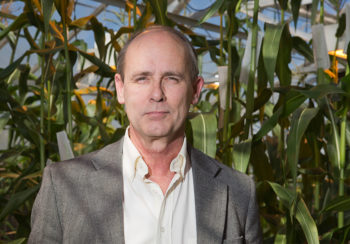Before Kelly Dawe became a pioneering geneticist, his affinity for plant life was nurtured in backyard soil.
Born and raised in Kansas until age 9, Dawe moved in 1971 with his family to Colorado, a place he still considers home. His parents had grown up in rural Kansas, and Dawe spent summers and family holidays returning to the state of his birth.
“My mom really identified with that Kansas farm culture,” recalled Dawe, Distinguished Research Professor and UGA Athletic Association Professor in Franklin College of Arts and Sciences.
His mother’s passion for gardening was passed on to him, and together they would carefully plan each season’s crops, ordering seeds during winter and even keeping a gardening log.
“We always had a garden together,” he said. “It was a small little garden, but it really gave me a very strong, firm interest in all kinds of plants.”
It didn’t stop there. Dawe worked at a plant nursery as a teenager, graduated from Colorado State with a degree in landscape horticulture, and obtained a master’s in botany and a Ph.D. in genetics, a subject for which he says he simply found a “natural sense.” He couldn’t really explain it.
“I could tell early on that I just had a better sense for genetics than most people,” Dawe said.
Plants were the root of Dawe’s genetics calling. From decoding corn genomes to revolutionizing breeding methods, Dawe’s natural aptitude for genetics and instinct to pivot has served him well throughout his career.
Pioneering the next chapter in corn genetics
Dawe began his postdoctoral work at a lab in Berkeley that used 3D light microscopy to study maize chromosomes. He followed in the footsteps of Barbara McClintock, winner of the 1983 Nobel Prize in Physiology or Medicine, who had discovered transposons, which are sequences of nucleic acid in DNA that can change their position in the genome. Dawe wanted to develop new methods to visualize maize chromosomes at higher resolution.
Corn was more than a model organism to Dawe. Beautiful, accessible, and genetically expressive, the crop is tall, sturdy, and—with the male and female parts physically separate—very simple to cross.
“That’s why early pioneers of genetics used it,” he said. “It’s so easy to work with as a genetic model system.”
After some time, however, Dawe could sense the field was evolving. Researchers were turning their attention to DNA genome assemblies and sequence analysis. The Human Genome Project, the “rough draft” of the human genome, was declared complete in 2003. The first corn genome to be mapped, B73, was completed a few years later in 2009. Trained in classical genetics and microscopy, Dawe knew it was time to do something new.

He carved out time to immerse himself in modern techniques like genome assembly, short-read mapping, and bioinformatics. Soon he was ready to take on his most ambitious project yet, mapping corn’s 26 genomes.
His goal was to fully sequence a set of 26 well-known maize lines that had become foundational in genetics research but, at that point, had only one complete genome assembly, B73. Dawe knew that sequencing all the lines simultaneously, using consistent technology and methods, would be crucial.
He partnered with expert collaborators, secured a $3 million grant from the National Science Foundation, and coordinated a massive nationwide effort involving four sequencing centers. The result was the most comprehensive pangenome resource for maize. It was published in Science and widely adopted across the maize research community, offering an essential resource to compare how genes and traits differ across varieties.
“It’s a cornerstone of the maize research community,” Dawe said.
Breakthrough in plant breeding
The maize mapping established Dawe as a leader in the field. While that project was ongoing, he also was pursuing a novel method to breed crop plants faster.
Corn is a globally vital crop (as well as a Top 10 commodity in Georgia) with diverse uses, from industrial products such as starches, sweeteners, and corn oil to biofuel production. In addition to its industrial uses, corn is a major feed grain for livestock and a staple food in many parts of the world. As global demand for corn continues to grow, developing faster, more efficient breeding methods is essential.
To create stronger, more productive crops, plant breeders often start with something called haploids, which carry just one set of genetic instructions instead of the usual two. Using haploids, breeders can quickly develop pure, inbred lines, which they can then mix and match to create hybrids with the best possible traits. Scientists long suspected that tweaking a particular protein—CENH3—could help produce haploids. Getting this to work in food crops like corn, however, hadn’t been successful.
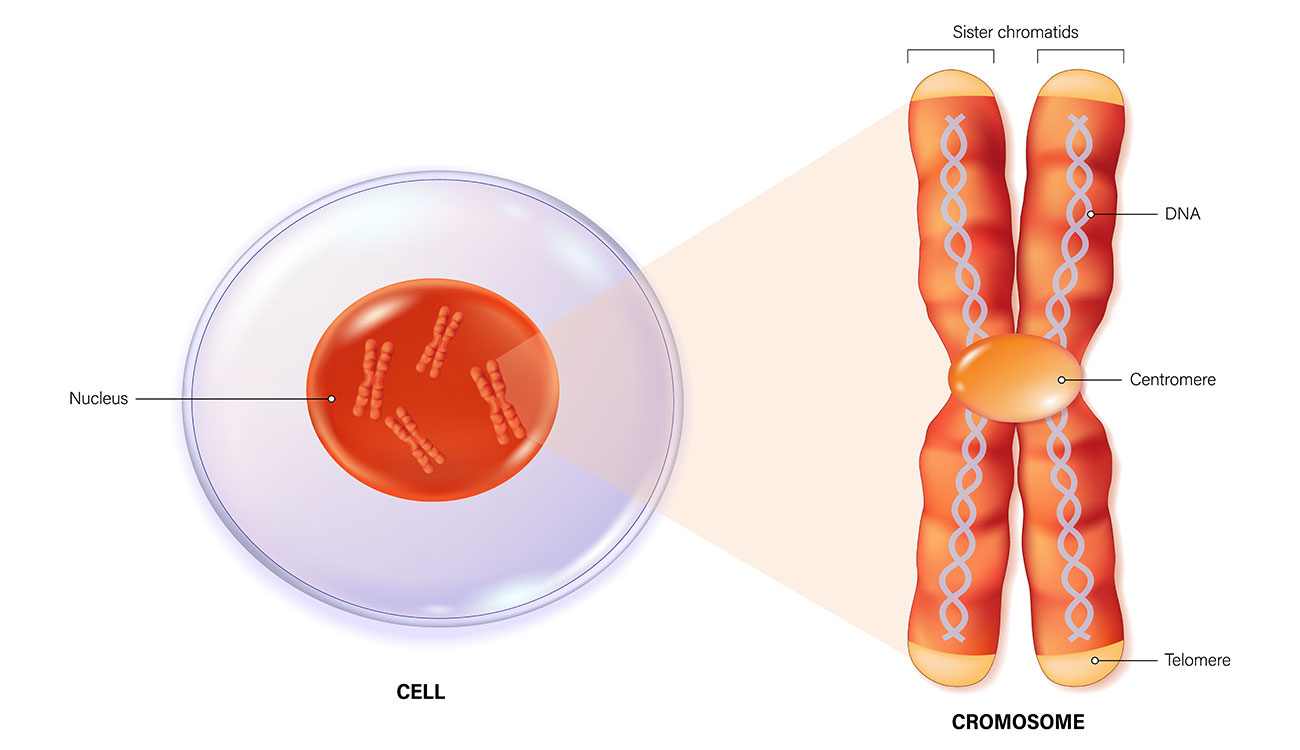
That changed when Dawe and his team created a version of a corn plant in which the CENH3 gene was turned off—what scientists call a “null mutant.” When they bred this modified plant with a normal corn plant, some of the offspring ended up with only one set of chromosomes—haploids. This demonstrated that DNA from one parent had essentially been deleted.
“This wasn’t something we predicted,” said Dawe. “But it opened a new door.”
Even though the new approach doesn’t work as often as some current methods—producing haploids just about 5% of the time compared to around 15%—it does offer a significant advantage: It works through the mother plant. Most methods only work through pollen (the male side), limiting which plants can be used. Dawe’s method gives breeders more flexibility and opens the door to a wider variety of corn plants, offering benefits for agriculture and global food security.
With the help of Innovation Gateway, Dawe’s technology has been issued multiple international patents and is patent pending in the U.S. An international agricultural company licensed Dawe’s technology, generating nearly $1.5 million in licensing revenue since the agreement was signed in 2021.
Coming full circle
Dawe’s research isn’t just about corn breeding. It explores centromeres and chromosome behavior. Recent work could also have implications in how a genetic mechanism in corn mirrors processes that fuel cancer.
This research, supported by a $1.8 million National Institutes of Health grant, has brought Dawe full circle, as he is examining the breakage-fusion-bridge (BFB) cycle that led to Barbara McClintock’s discovery of transposons in the 1940s.
The BFB cycle is a mechanism of genomic instability that occurs when two chromosomes are fused together to create an abnormal chromosome. Using modern tools coupled with his three decades of expertise, Dawe hopes to gain better insight into this destabilizing event that is a suspected culprit of cancer.
“I feel proud,” Dawe said. “Proud that I chose an unusual topic to study and stayed with it for so many years. Proud that, in the end, I did make substantial contributions not just to centromere biology but to plant genetics as a whole.”



